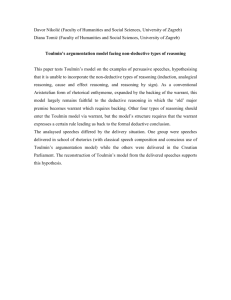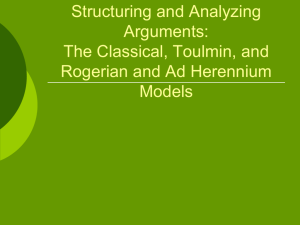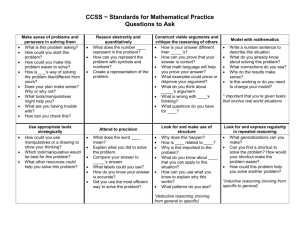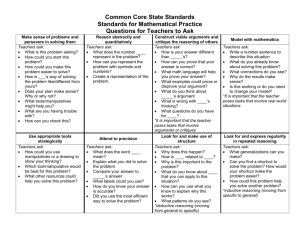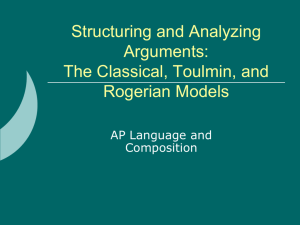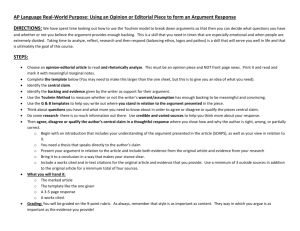Argumentation
advertisement
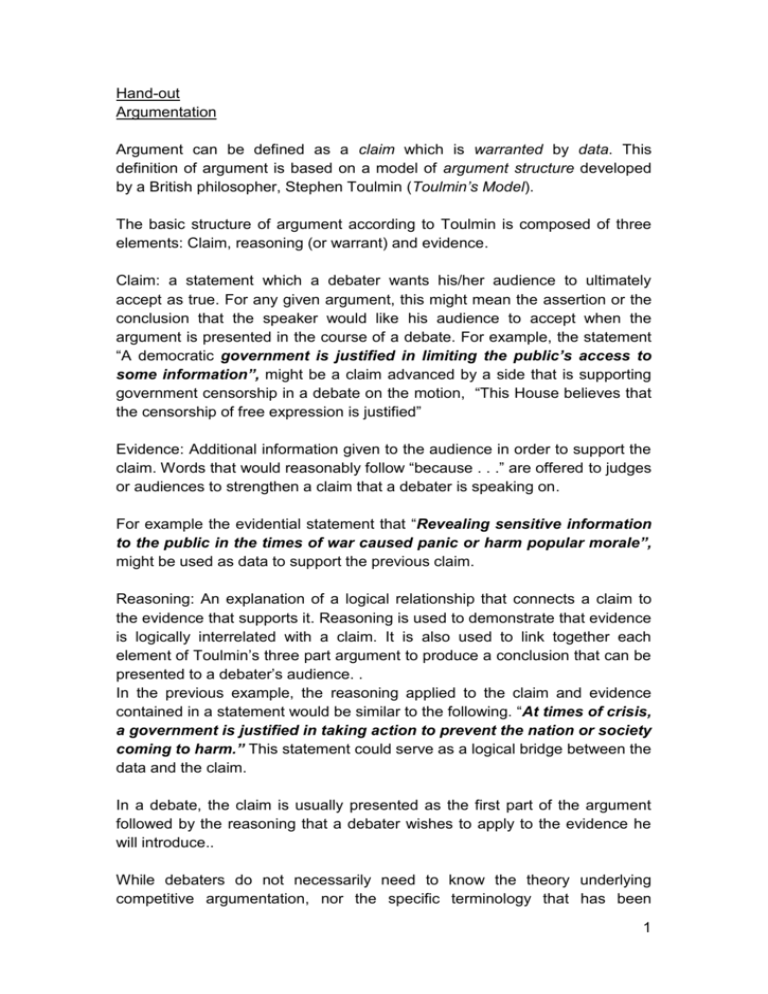
Hand-out Argumentation Argument can be defined as a claim which is warranted by data. This definition of argument is based on a model of argument structure developed by a British philosopher, Stephen Toulmin (Toulmin’s Model). The basic structure of argument according to Toulmin is composed of three elements: Claim, reasoning (or warrant) and evidence. Claim: a statement which a debater wants his/her audience to ultimately accept as true. For any given argument, this might mean the assertion or the conclusion that the speaker would like his audience to accept when the argument is presented in the course of a debate. For example, the statement “A democratic government is justified in limiting the public’s access to some information”, might be a claim advanced by a side that is supporting government censorship in a debate on the motion, “This House believes that the censorship of free expression is justified” Evidence: Additional information given to the audience in order to support the claim. Words that would reasonably follow “because . . .” are offered to judges or audiences to strengthen a claim that a debater is speaking on. For example the evidential statement that “Revealing sensitive information to the public in the times of war caused panic or harm popular morale”, might be used as data to support the previous claim. Reasoning: An explanation of a logical relationship that connects a claim to the evidence that supports it. Reasoning is used to demonstrate that evidence is logically interrelated with a claim. It is also used to link together each element of Toulmin’s three part argument to produce a conclusion that can be presented to a debater’s audience. . In the previous example, the reasoning applied to the claim and evidence contained in a statement would be similar to the following. “At times of crisis, a government is justified in taking action to prevent the nation or society coming to harm.” This statement could serve as a logical bridge between the data and the claim. In a debate, the claim is usually presented as the first part of the argument followed by the reasoning that a debater wishes to apply to the evidence he will introduce.. While debaters do not necessarily need to know the theory underlying competitive argumentation, nor the specific terminology that has been 1 discussed above, it may be useful for them to recognize some most common types of arguments and their strengths and weaknesses. The most common types of arguments include: 1. Deductive reasoning. Based on inferring a specific conclusion (claim) from a general principle. “Terrorism is immoral (Claim) since it is consists of violent acts against innocent people (data) Warrant: Violent acts against innocent people are always immoral (General Principle).” 2. Reasoning by example involves inferring a general conclusion from a particular instance “Legalization of soft drugs can decrease hard drug use (Claim), as the example of the Netherlands demonstrates. After legalization of the use and sale of soft drugs in certain areas of Holland, the use of hard drugs in those areas has decreased (Data) Warrant: the Dutch example is representative and is applicable to other contexts).” 3. Consequential reasoning establishes a relationship between an effect and its cause (e.g. by demonstrating that one event/ occurrence causes another). “If we provide people with safe drinking water we will substantially decrease Guinea Worm Disease (Claim) because people become ill with the disease if they drink stagnant water infected with a parasite (data). Warrant: if we reduce the cause of Guinea Worm (breeding grounds for the parasite) we will reduce the number of people who become infected with the parasite.” 4. Reasoning by analogy establishes a comparison between two cases and argues that what is true of one case or event is likely to be true of the other. “Experiments on animals should be considered immoral, (Claim) since involuntary experiments on human beings are considered immoral (Data). Warrant: Human beings and animals are sentient beings and should be treated in the same way as far as their use in experiments are concerned.” 5. Reasoning by sign draws a connection between some phenomena and other conditions that tend to accompany those phenomena. 2 The economy has improved (Claim) since people are buying more luxurious goods (Data) Warrant: Increased spending on luxurious goods is a sign of economic improvement. 3


